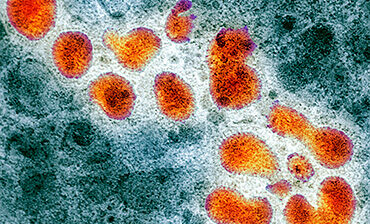Avian influenza

Influenza is an infectious disease that primarily presents with respiratory signs and symptoms, caused by RNA viruses. The most significant impacts of influenza viruses on humans are those arising from the influenza A strains. The natural reservoir of influenza A strains is a diverse pool of viruses among aquatic wild bird populations – the avian influenza (AI) viruses. These viruses are of high pathogenicity (HPAI) and low pathogenicity (LPAI), according to their severity in the avian species they usually infect. HPAI epizootics have been documented worldwide due to the A/H5 and A/H7 virus groups. The ongoing A/H5 outbreaks in wild and farmed birds are affecting several countries worldwide, and have caused sporadic transmission events to humans.
Read more facts about avian influenza in humans



